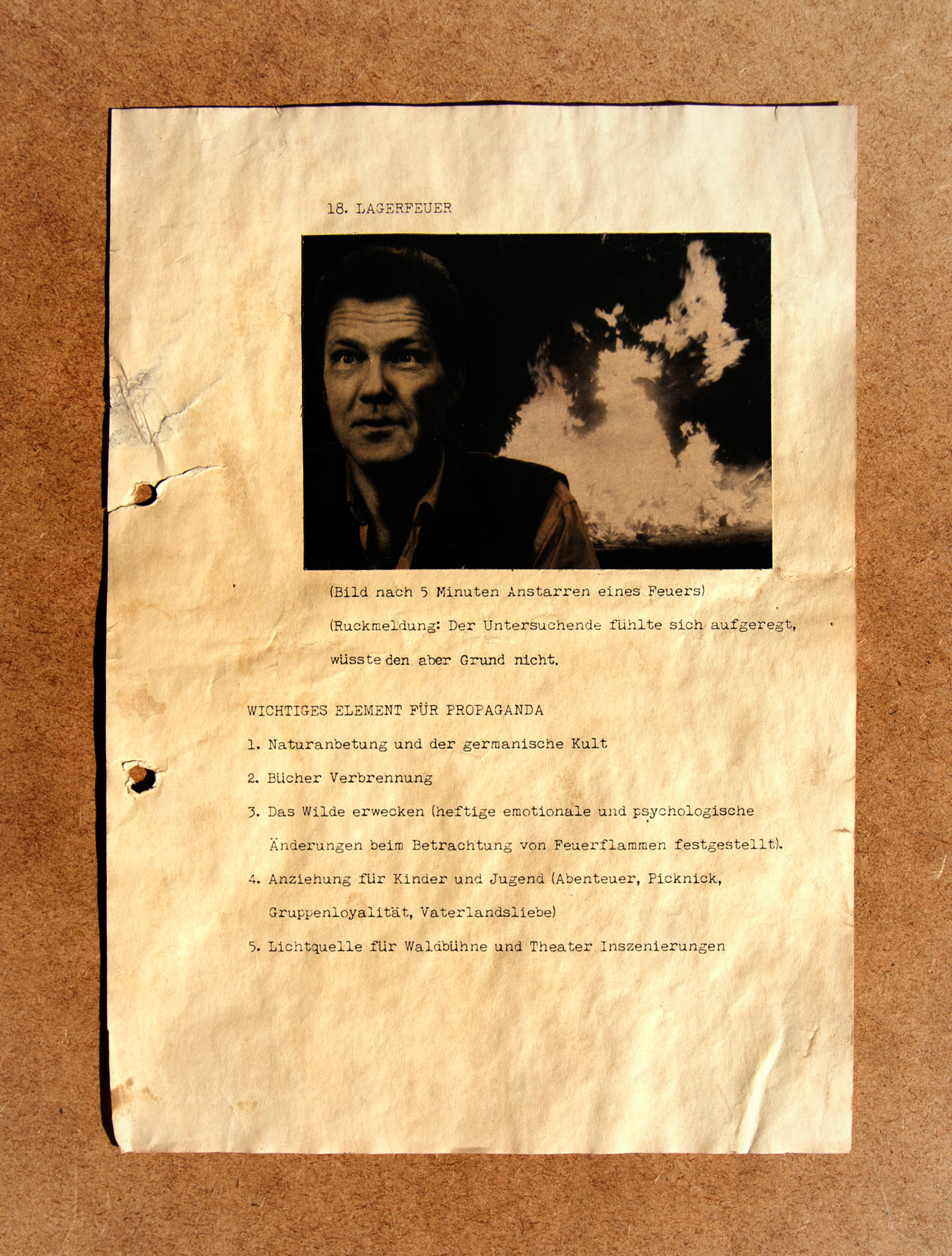Thingsstätten were open-air arenas built by the Nazi Party in Germany between 1933 and 1936 to spread the Thing movement of the Nazi Party. The Thing movement called for the people to recognize their Germanic roots and traditions. Plays were staged in these arenas to awaken in the people the notion of Fatherland and the German Folk. These arenas were later also used for political demonstrations for the propaganda of the Nazi Party. According to Joseph Goebbels, the Minister of Public Enlightenment and Propaganda in the Third Reich, these arenas were supposed to be the parliaments of their times—places where people could gather and discuss. The construction of Thingsstätten led to the dramatic staging of the Führer cult.
Through this fictional photographic reconstruction, the artist has tried to imagine the commissioning of a study by the Ministry of Propaganda of the NSDAP (National Socialist German Workers’ Party, commonly known as the Nazi Party) for the creation of a new kind of propaganda instrument. These documents, which could have been written by social scientists based on surveys and psychological tests, are in the nature of the scientific study and could have formed the first drafts of the plans for Thingsstätten. The pages which seem archived, lost or damaged, and rescued or rediscovered, reveal the decisions made regarding the design of the arenas, their locations, and use. Who conducted these studies and when remains unknown. Through this artwork, the artist subtly mocks the idea of scientific rationalization which disguises authoritarian fanaticism and tries to create a commentary not only of a past incident but to serve future times, with the increasing rise of nationalist sentiments not only in Western countries but also in his own homeland of India.










